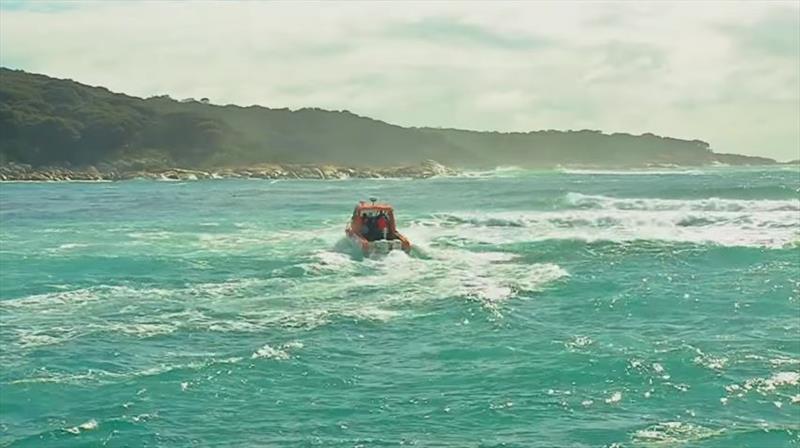
Learn how to cross a bar
by Maritime Safety Victoria 7 Feb 2020 13:00 UTC

Crossing ocean barways safely © Maritime Safety Victoria
Two fishers were ejected from their boat crossing Barwon Heads (Victoria, Australia) in January. Always consider how to cross bars and Port Phillip Heads at the best time. Avoid low tide, at the end of an ebb with a swell running which can produce breaking waves.
Crossing a bar is one of the most dangerous boating activities. It is always considered to be a time of heightened risk and a job for a practiced and experienced vessel operator.
Key things to remember
- All bars have areas of broken water containing air - these areas can severely reduce the stability and handling of a vessel.
- Night crossings are more hazardous.
- Vessels attempting to cross a bar at, or near, low water are more likely to experience adverse conditions.
- Liquids and loose objects 'sloshing' from side to side may reduce the stability of the vessel, for example fish, bins and water on deck.
- Weather against tide is the worst time to cross a bar. Always check the weather conditions and tide times before you head out.
What is an ocean bar?
A bar is an accumulation of sand or silt at the entrance of a river, creek, lake or harbour. There are several bars located throughout Victoria, including Lakes Entrance, Patterson River, Anderson's Inlet, Barwon Heads, McLaughlin's Beach and Port Albert.
Conditions prevailing on a bar can cause steep and breaking seas. Conditions can change quickly and without warning. Crossing a bar is a job for a practiced and experienced vessel operator.
Do your research
All sand bars are different. You need to learn about each bar before attempting to cross it. The best sources of information are local commercial boating operators, maritime authorities, volunteer rescue groups or Victoria Police. Immediately prior to crossing a bar always contact the local authority for an update on the conditions at the bar.
Assess conditions
Boaters must assess conditions on a bar and be aware that a rapid change in conditions might prevent a safe return. Vessels unable to weather adverse sea conditions outside the bar should not leave port. You should make sure that you have adequate reserve fuel and provisions should you need to remain at sea longer than intended, or need to divert to another port.
Obtain a weather report and check the tide times for when you intend to cross the bar. Also ensure that you know what weather conditions are expected on your return. Do not venture out to sea if you are in any doubt about your ability to return.
Prepare your vessel for crossing
Make sure all deck openings, hatches and doors are securely closed and battened down. All loose gear should be stowed away and secured. All passengers must have the appropriate personal flotation device (PFD or lifejacket) on and should be aware of where the lifesaving equipment is kept.
Make sure equipment is ready: Before setting out make sure the engines are drawing fuel from a full tank and test the engines 'ahead' and 'astern'.
Be aware of surroundings: While approaching the bar keep a close lookout for the depth of water, wave size, and where the breakers are. Make sure you also monitor the wind direction and force, wave pattern timing and potential alternate routes.Note: breaking waves indicate shallow water.
While crossing
Outbound - heading out to sea
- Motor slowly to the breaking waves looking for the area where waves break least or even better, not at all. Wait for a flatter than usual stretch of water and motor through.
- If there seems to be no break in the waves, slowly power through each oncoming wave.
- Ensure that you are not going too fast over each wave as this could cause the vessel to 'bottom out' if it dives heavily.
- Punching through waves can cause severe structural damage to your vessel.
- If possible, make the crossing with the bow at a slight angle to the waves so that the vessel gently rolls over the crest of each wave.
Inbound - heading back to port
- Approaching from sea, increase power of the vessel to catch up with the bigger set waves.
- Position the vessel on the back of the wave (do not surf down the face of the wave).
- Adjust the vessel's speed to match the speed of the waves, but do not attempt to overtake the waves.
- Approaching from the sea it is more dangerous with a following sea.